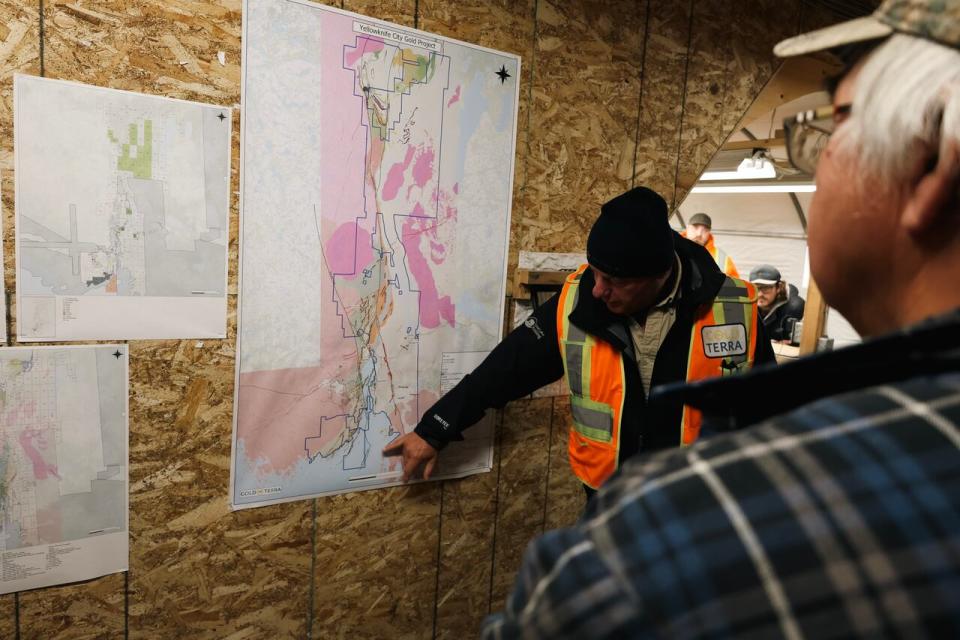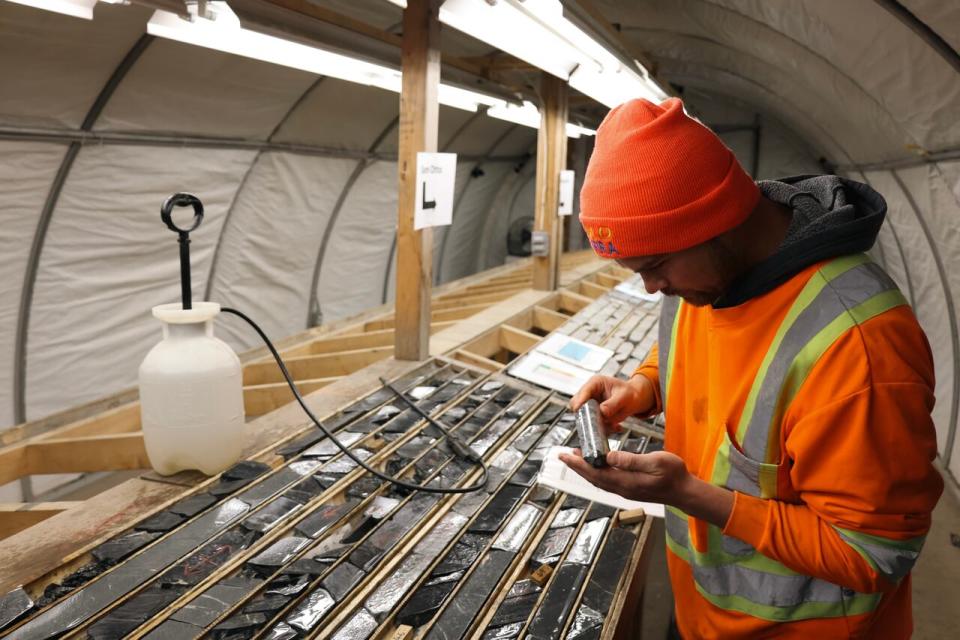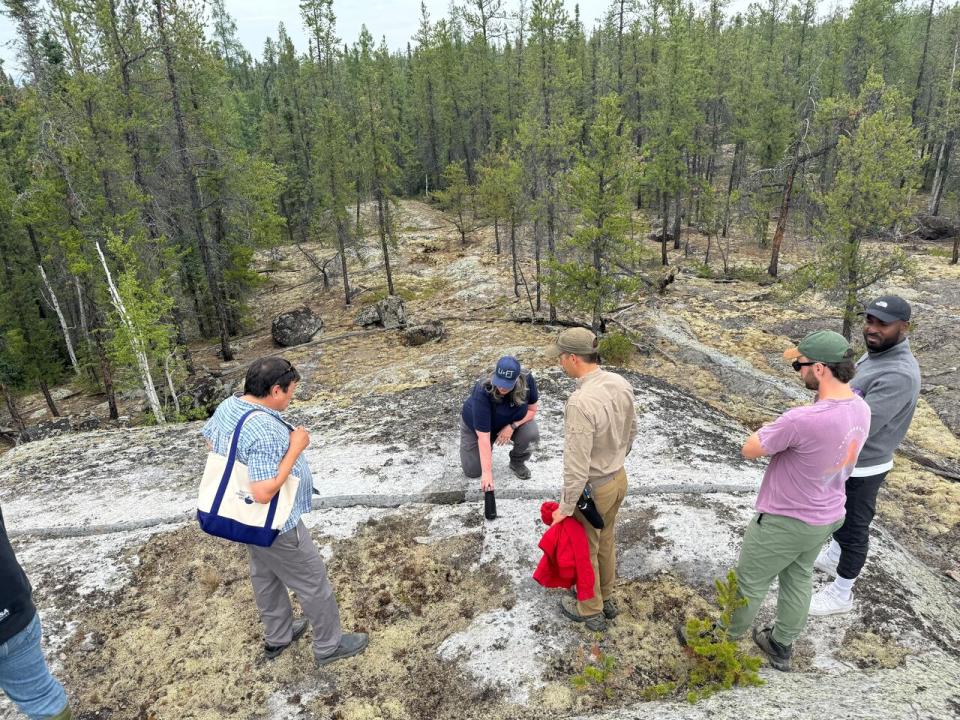


While the price of gold has been climbing steadily, now selling for more than $2,600 USD per ounce, one mining CEO says financing is still hard to come by.
The future of the N.W.T.’s mining industry remains far from certain. Current exploration projects are focused on gold and lithium. Both had company representatives in Yellowknife this week for presentations and to strengthen community relationships.
With many of the N.W.T.’s diamond mines making plans for closure in the foreseeable future, the question is which, if any, of the region’s current exploration projects will turn into a mine. Multiple companies have begun testing lithium in the area but those looking for gold aren’t easily swayed.
Gold Terra CEO Gerald Panneton thinks the price of gold could reach $3,000 USD and that the next big mine won’t be a lithium one.
“It’s never going to be, I can tell you that. Now if you want to put your bet, it’s going to be gold,” said Panneton.

Panneton points to mining areas of interest on the Yellowknife City Gold Project map. (Jocelyn Shepel/CBC)
Three weeks ago, his belief was reflected in a press release about Con Mine, announcing that the time they have to evaluate that property has been extended by two years to 2027.
Evaluating the mine includes digging for gold.The company is focusing drilling in the Campbell Shear where approximately 14 million ounces of gold has been produced over time.
Precious metals and gems are measured in troy ounces, which are around 10 per cent heavier than ounces.
He said they’ve found close to 500 to 600 thousand ounces on Con Mine property claims but need to reach roughly 1.5 to 2 million ounces to justify purchasing the property.
This July, the company drilled a 3,002-metre-deep hole, which they are looking at testing in hopes of finding the rest of the gold needed for a purchase.


Gerald Panneton in front of One of Gold Terra’s drill sites, south of Con Mine, during a tour on Tuesday (Jocelyn Shepel/CBC)
Panneton was in Yellowknife for a town hall Tuesday to speak about their progress but says they’re still far from opening the mine.
“In this current market, with a very, very difficult money supply, with no help from the government, it’s very difficult,” he said.


Ryan Bachynski, a senior project geologist for Gold Terra, examines cut core samples. (Jocelyn Shepel/CBC)
Other companies testing lithium
Multiple mining companies are set on making a name within the lithium market and taking advantage of the lithium deposits in and near Yellowknife.
Panneton thinks there is potential for it in Yellowknife but isn’t convinced of its longevity. He said he optioned off two property areas to a mining company, but exploration didn’t pan out.
“We did a deal on part of our property for lithium exploration and one year later, they bailed out. You see, they spent one year and they bailed out,” said Panneton.
Not everyone is bailing on lithium, though. Li-FT is one of the companies doing lithium exploration around the Yellowknife area. Chief sustainability officer April Hayward says they’ve been steady at work.
“If you look at what has been done by other companies, like by all of the servicing exploration companies this last year and a half, Li-FT is really the one that has been making a lot of investments in terms of exploration and understanding whether or not there’s a resource there,” she said.
Last week, Li-FT released lab results of digging operations. The results included producing “high-quality spodumene,” a mineral that is valuable due to its lithium content. Spodumene itself can have different lithium concentrations in it, known as the grade of lithium.
The average grade Li-Ft is finding is around 1.02 per cent, which Hayward says are pretty good results.
“That’s considered a potentially mineable lithium grade,” said Hayward.


Li-FT chief sustainability officer April Hayward leading a tour at a lithium exploration site (Li-FT)
Lithium company optimistic for future
The lithium market is in a downswing but Hayward believes it will recover at some point.
“I think the reality is we all kind of need to be ready to take advantage of that when it happens,” she said.
She added things like receiving the lab results and economic studies are an important step. The company is also currently working toward a preliminary economic assessment and doing community engagement.
“[We want] to try to find a path forward that everyone is comfortable with and that works with market conditions and opportunities when they arrive,” Hayward added.
In a press release last Monday, Francis MacDonald, CEO of Li-FT, said the results were promising and that methods they tested would work for more accessible mining sites
In the release, Macdonald commented they believe the sites could be beneficial in the long term.
“We envision could comprise lithium production in the district for a generation or more. As such the results of these important studies underpin the high value potential for our Yellowknife lithium project,” MacDonald stated.